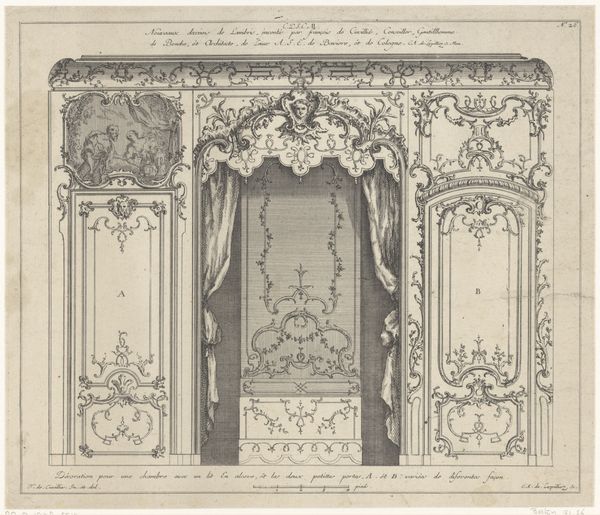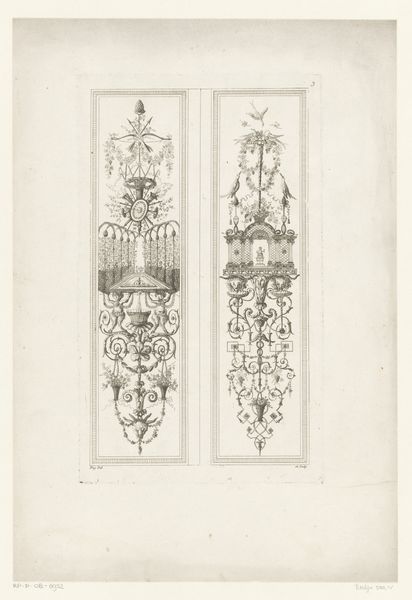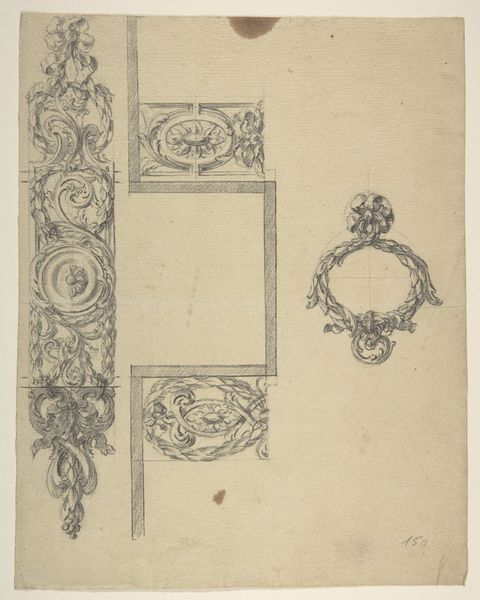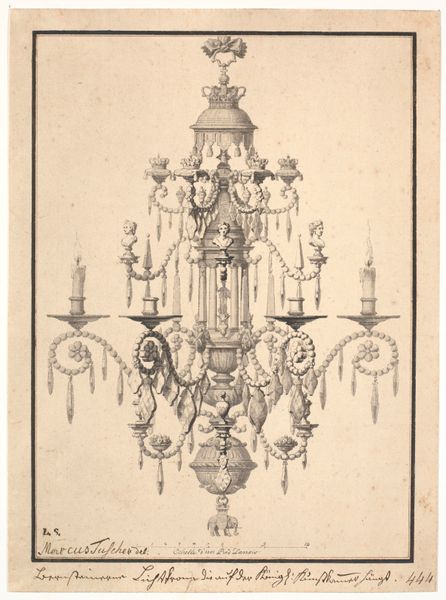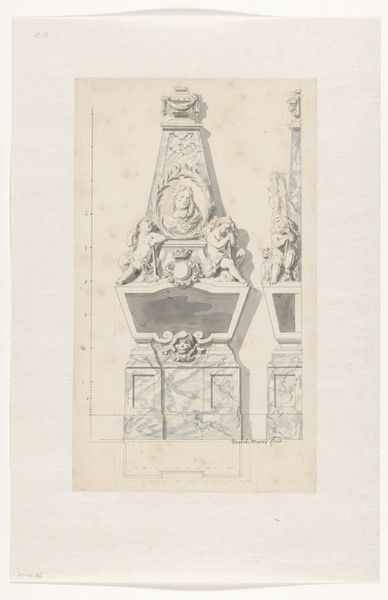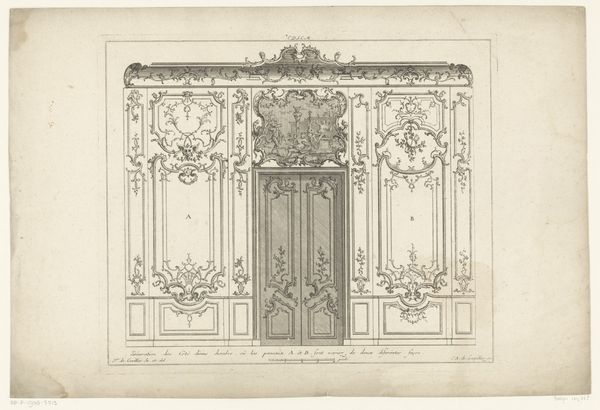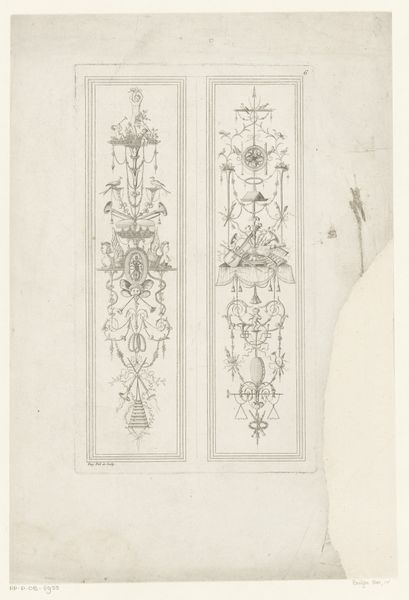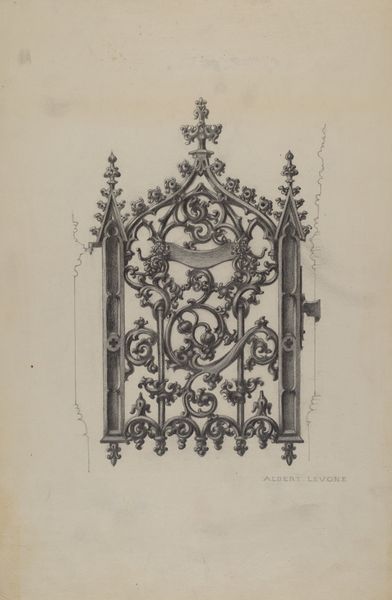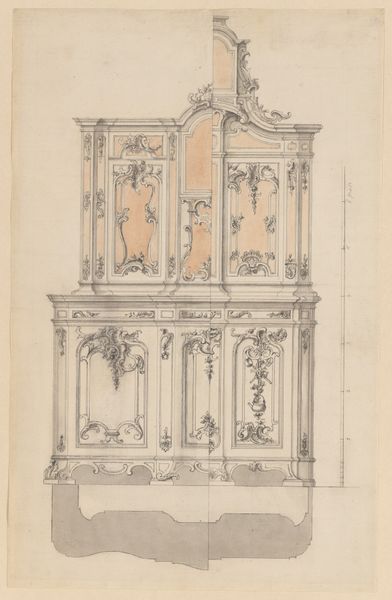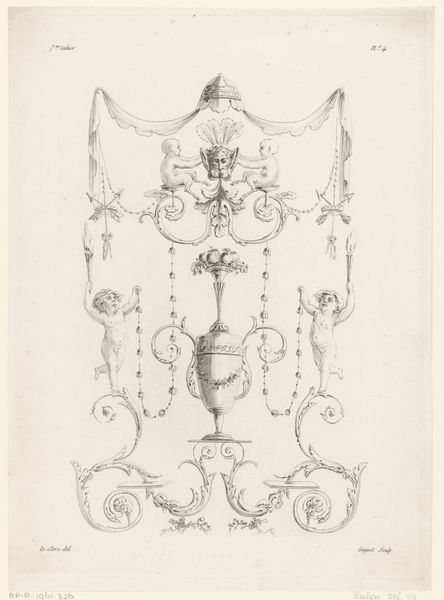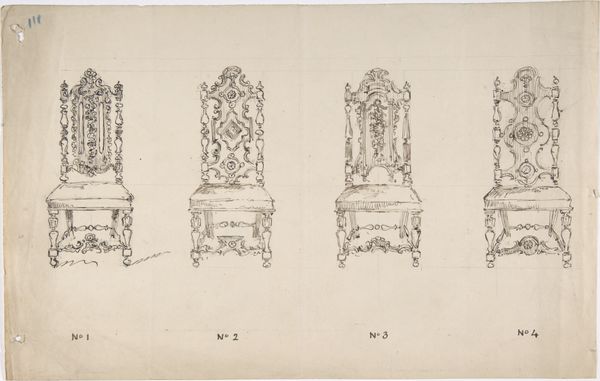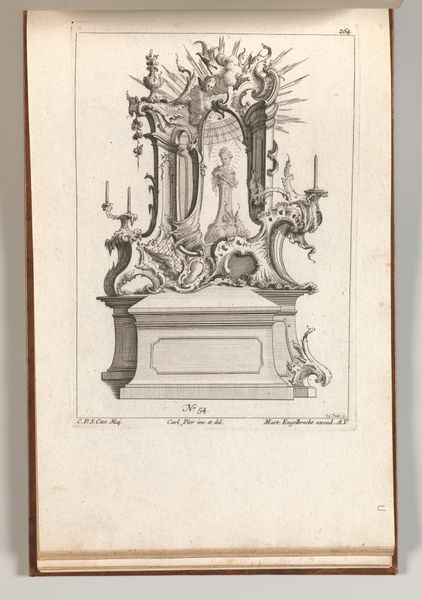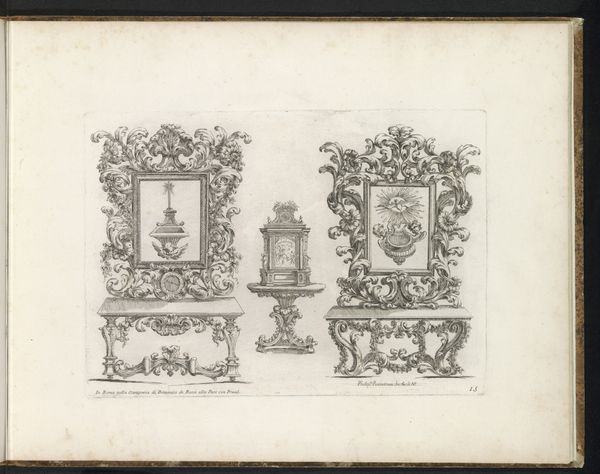
drawing, print, paper, pen
#
drawing
#
baroque
# print
#
pen sketch
#
paper
#
geometric
#
pen
Dimensions: 10-1/2 x 9-7/16 in. (26.7 x 24.0 cm)
Copyright: Public Domain
Editor: This is Giovanni Battista Natali III's "Design for a Portable Screen," dating from sometime between 1698 and 1765. It’s a pen and ink drawing on paper. It looks so precise and measured, but I wonder, why would someone meticulously plan out something as seemingly decorative as a screen? Curator: It's not simply decorative. During this era, screens functioned as potent symbols of status and control, acting as mobile architecture. They dictated how space was experienced and traversed within a home. Notice the geometric under-drawing. Do you think that served an important function? Editor: I see! So the screen isn’t just about beautifying a room, but about defining social interactions and, yes, the underlying geometry suggests he’s using perspective, almost mapping it. That’s quite a departure from how I usually think about furniture design. Curator: Precisely. Natali's drawing embodies Baroque ideals, using ornament and dynamism to make that point. Now consider the date; the artist’s name suggests this design would not only fit in a space but carry prestige. What do you make of the meticulous details? Editor: So the highly ornate details – the faces, foliage and vases – that is meant to signal refined taste and therefore elevated social position to guests viewing it in one’s home. I initially thought this was simply a sketch, but understanding its social implications really shifts my perspective. It's like a portable stage setting! Curator: Exactly. Seeing it as part of a larger theatre for social exchange can broaden your understanding. It also challenges any strict divisions we might make between art and design. Editor: I will certainly never look at a decorative screen the same way again! It highlights how much objects can tell us about the society and class for which they are created. Curator: Indeed. Looking closely reveals unexpected complexities about social and cultural meanings embedded within design.
Comments
No comments
Be the first to comment and join the conversation on the ultimate creative platform.
